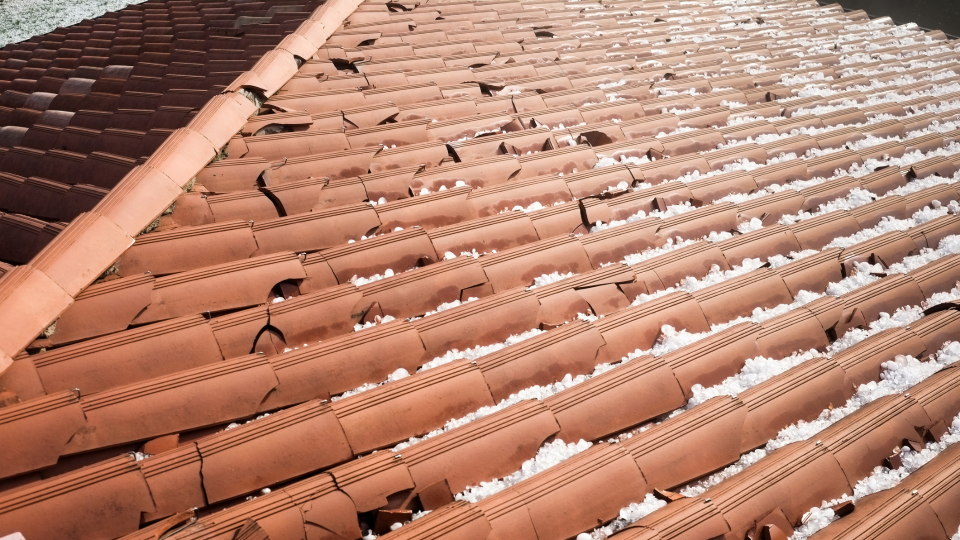5 ways to protect your home, car and more from hail damage

— Recommendations are independently chosen by Reviewed’s editors. Purchases you make through our links may earn us a commission.
Between strong tropical storms and blazing heat waves, the U.S. has been feeling the effects of severe weather this year, a trend that scientists expect to continue as extreme weather becomes the "new normal". Among these severe weather events during warmer months are hailstorms, which have the potential to cause dings, dents and other damage to your surroundings.
While hailstorms can happen nearly anywhere in the U.S., Nebraska, Colorado and Wyoming are among the areas that experience the most hailstorms known as "hail alley." They average seven to nine hail days per year. Hail can be as minimal as a pea-size amount, but can also be as large as a softball or grapefruit, with larger hail posing a greater risk to property and people.
Tackle your holiday shopping early with deals and expert advice delivered straight to your phone. Sign up for text message alerts from the deal-hunting team at Reviewed.
Hail can happen without a warning, so your best bet is to be as prepared as possible to reduce the risks of hail damage. Here's what to know about hailstorms—and what you can do to protect your home and car before they strike.
How much damage can hail cause?

According to the National Oceanic and Atmospheric Administration (NOAA), hailstorms are a weather phenomenon that occurs when raindrops are "carried upward by thunderstorm updrafts into extremely cold areas of the atmosphere." Those raindrops freeze, causing what we know as hail. If the hail becomes too heavy in weight to be supported by the storm, it falls toward the ground.
The damage left behind can vary in severity, depending on the wind speed and the size of the hail. Some storms may leave no trace, while others create a much more dangerous situation for life and property.
The bad news is that there isn't much you can do to prevent hailstorms in your area. However, you can minimize the effects of hailstone damage with some simple steps.
1. Park your car carefully
Hailstorms can cause major damage to vehicles, specifically for those not completely covered by a garage or other indoor shelter. Cracked windshields or sunroofs, broken mirrors or lights and dents on the car itself can all be caused by hailstones. If you receive word of a severe thunderstorm with the potential of hail moving towards your area, and you have the option, move your car to covered parking.
If you don't have a garage or awning to park your car under, Progressive Insurance suggests parking your car elsewhere, such as a local mall with a parking garage, to keep your car safe from hailstones.
If none of the above are options, try covering your car or car's windshield with something like a blanket to minimize the impact of the stones. We recommend investing in a weatherproof car cover ahead of time that you can don when any storm rolls through. This 18-layer all-weather car cover sold at Amazon has raving reviews for its UV protection, water resistance, scratch resistance, and other protecting benefits. While it may not completely prevent hailstorm damage, it can help to minimize it.
2. Close and cover your windows at home
Along with damage to the exterior of your home, hail can also intrude into the home—specifically, large hailstones can damage or break into windows in your home.
To minimize this kind of damage, close all drapes, curtains, blinds or shades in your home just in case a broken window occurs. Ideally, some of the impacts of the broken glass can be suppressed, and can also help to prevent broken glass from being blown around the home if the winds are strong.
3. Protect your patio furniture

Before a storm rolls through, move more fragile items like plant pots, vases or glass patio tables indoors. However, don't try to move things out of the way last minute, or as hail is coming down, as this can be risky to your own safety.
If they're too bulky or impractical to move inside, try to keep more fragile items underneath an awning, especially during storm season. That way, you can prevent the last-minute panic before a hailstorm and spend more time protecting yourself and your family.
4. Prune your trees ahead of time
Just like many other storms, hailstorms can take down weak or dead branches and limbs from surrounding trees, leaving behind a messy and potentially dangerous yard situation.
Before any storm season, we recommend keeping your trees trimmed of any dead limbs well before a storm rolls through. This can reduce the possibility of damage or injury during or after a storm.
Try using the Felco 2 hand pruner, the best pruning shears we’ve ever tested, for trimming smaller stems and branches. For larger branches, go for a lopper for extra strength or a telescopic pole saw for taller limbs. Be sure to proceed with caution if you’re not experienced in trimming larger trees and consider contacting an arborist for extensive or dangerous jobs.
5. Examine your home after the storm
One of the most common types of damage from hailstorms is roof damage—large and heavy hail can easily crack or destroy tiles. According to Travelers Insurance, your home's roofing may have hail damage if you notice dents and dings in aluminum siding, gutters or asphalt shingles. For vinyl or wood siding, you may notice cracking. Large, dense hail may even be able to puncture a roof, leading to an even bigger headache when it comes to roof repairs. For more information on identifying hail damage on your roof, Travelers has a helpful infographic that can help you determine what is hail damage versus other storm damage or wear and tear.
Keeping tabs on your home after a storm could help you notice and fix small problems before they become bigger ones—and before the next hailstorm hits.
Don’t get thwarted by shipping delays or sold-out favorites this holiday season. Sign up for our free weekly newsletter and get the product reviews, deals and holiday gift guides you need to start shopping now.
The product experts at Reviewed have all your shopping needs covered. Follow Reviewed on Facebook, Twitter, Instagram, TikTok or Flipboard for the latest deals, product reviews and more.
Prices were accurate at the time this article was published but may change over time.
This article originally appeared on Reviewed: How to protect your home, car and more from hail damage

 Yahoo Movies
Yahoo Movies 
